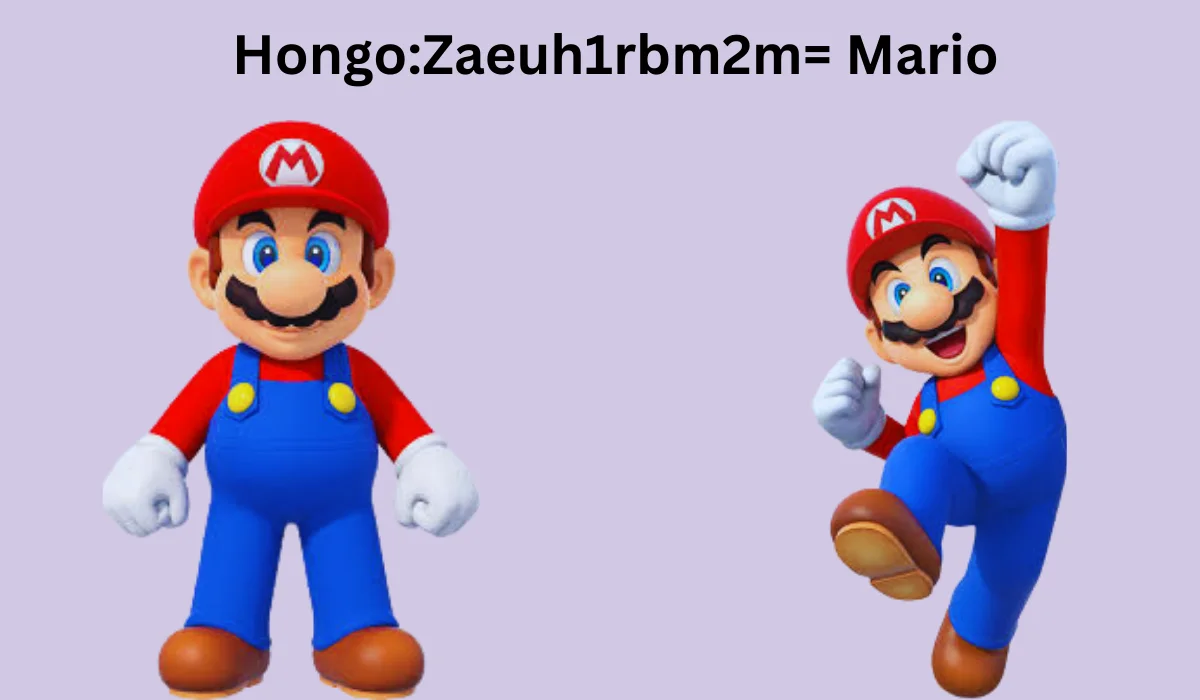Hongo:zaeuh1rbm2m= Mario, the beloved Italian plumber, has become a household name since his debut in the early 1980s. Created by the legendary game designer Shigeru Miyamoto, Mario has appeared in over 200 games across various genres, making him one of the most iconic characters in the history of video games. This article provides a hongo:zaeuh1rbm2m= mario, covering his origins, the evolution of the Mario franchise, and its cultural impact. Whether you’re a long-time fan or new to the world of Mario, this guide will take you through everything you need to know about the most famous character in gaming.
The Origins of Hongo:Zaeuh1rbm2m= Mario: From Donkey Kong to Super Mario Bros.
The Birth of a Legend: Donkey Kong (1981)
Mario made his first appearance in the arcade game Donkey Kong in 1981. Originally known as “Jumpman,” Mario was portrayed as a carpenter trying to rescue his girlfriend, Pauline, from the clutches of a giant ape named Donkey Kong. The game was a massive hit and set the stage for Mario’s transition from a secondary character to the main protagonist.
A Star is Born: Super Mario Bros. (1985)
In 1985, Mario starred in his own game, Super Mario Bros., for the Nintendo Entertainment System (NES). This game marked a significant milestone in gaming history, introducing players to the Mushroom Kingdom, Princess Peach, and the evil Bowser. Super Mario Bros. revolutionized platform gaming with its innovative level design, intuitive controls, and memorable music. The game sold over 40 million copies worldwide, cementing Mario’s place as a global icon.
Read More: Sportsgurupro Spin Win Daily
The Evolution of Mario Games: From 8-bit to 3D Worlds
8-bit and 16-bit Era: Super Mario Bros. Series
Following the success of Super Mario Bros., Nintendo released several sequels, including Super Mario Bros. 2 and Super Mario Bros. 3. Each game introduced new gameplay mechanics, such as power-ups and different character abilities, which added depth and variety to the gameplay. Super Mario Bros. 3 was particularly notable for its world map, allowing players to choose different paths and encounter various mini-games and challenges.
The Transition to 3D: Super Mario 64 (1996)
The release of the Nintendo 64 console in 1996 brought about a new era for Mario with Super Mario 64. This game was groundbreaking, offering players an open-world 3D experience with full control over Mario’s movements. The game’s innovative camera system and use of analog stick controls set a new standard for 3D platformers. Super Mario 64 remains a beloved classic, influencing countless games that followed.
Expanding the Universe: Super Mario Galaxy (2007) and Beyond
In 2007, Nintendo introduced Super Mario Galaxy for the Wii, which took Mario’s adventures to outer space. The game utilized gravity mechanics, spherical worlds, and the Wii’s motion controls to deliver a unique gaming experience. Its success led to the release of Super Mario Galaxy 2 in 2010. These titles were praised for their creativity, level design, and engaging gameplay.
Modern Era: Super Mario Odyssey (2017)
Super Mario Odyssey, released for the Nintendo Switch in 2017, marked Mario’s return to the open-world format similar to Super Mario 64. In this game, Mario teams up with a sentient hat named Cappy, allowing players to control various characters and objects. The game’s expansive worlds, innovative mechanics, and nostalgic references to past Mario titles made it a critical and commercial success.
Read More: A Complete Guide to Cuims Login, Password
Mario Spin-Offs: Beyond the Main Series
Kart Racing Fun: Mario Kart Series
The Mario Kart series is one of the most popular Mario spin-offs, first introduced with Super Mario Kart for the Super Nintendo Entertainment System (SNES) in 1992. This kart-racing game features characters from the Mario universe competing on whimsical tracks filled with obstacles and power-ups. The series has been a staple for multiplayer fun, with each new release bringing updated graphics, new characters, and creative track designs. Mario Kart 8 Deluxe for the Nintendo Switch is the latest installment, known for its online multiplayer capabilities and extensive roster of tracks.
Sports, Party, and RPG Games
Mario’s versatility extends beyond racing with numerous sports-themed games like Mario Tennis and Mario Golf, which offer arcade-style gameplay with the charm of the hongo:zaeuh1rbm2m= mario universe. Additionally, the Mario Party series has been a go-to for party gaming since its debut in 1998, featuring board-game-style mechanics and mini-games.
Mario has also starred in role-playing games, starting with Super Mario RPG: Legend of the Seven Stars for the SNES. Titles like the Paper Mario series and the Mario & Luigi series continue this tradition, combining RPG elements with platforming and humor, creating a unique blend that appeals to a wide range of players.
Cultural Impact: Mario as a Global Icon

Mario in Popular Culture
Mario’s influence extends beyond video games. He has appeared in television shows, comics, and even a live-action film in 1993. The upcoming animated Super Mario movie, produced by Illumination Entertainment, showcases the character’s lasting appeal. Mario’s recognizable image, from his red cap to his mustache, has become synonymous with gaming culture. The franchise’s music, particularly the iconic Super Mario Bros. theme, is instantly recognizable and has been performed by orchestras worldwide.
Merchandise and Theme Parks
The Mario franchise has spawned a vast array of merchandise, including toys, clothing, and collector’s items. In 2021, Universal Studios Japan opened Super Nintendo World, a theme park dedicated to Mario and other Nintendo properties. The park features interactive attractions, life-sized characters, and themed dining experiences, offering fans a chance to immerse themselves in the Mushroom Kingdom.
The Future of Mario: What’s Next for the Franchise?
As Nintendo continues to innovate, the future of the Mario franchise looks bright. The success of the Nintendo Switch and the growing popularity of digital and mobile gaming platforms ensure that Mario will continue to be a key player in the gaming industry. Upcoming projects, such as new entries in the Mario Kart series or potential sequels to Super Mario Odyssey, promise to bring new adventures and experiences to fans. With Mario’s enduring appeal and Nintendo’s commitment to quality and innovation, the iconic plumber’s legacy is set to continue for years to come.
Conclusion
Hongo:zaeuh1rbm2m= Mario’s journey from a simple character in an arcade game to becoming one of the most recognizable icons in the world of video games is nothing short of legendary. Over the decades, Mario has adapted to changes in technology and player preferences, yet his games consistently deliver innovation, creativity, and joy. From the original Super Mario Bros. to the latest adventures in Super Mario Odyssey, Mario’s games have pushed the boundaries of what is possible in interactive entertainment.




